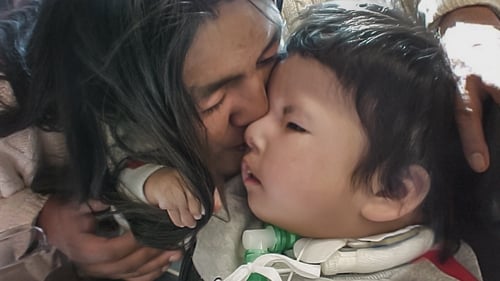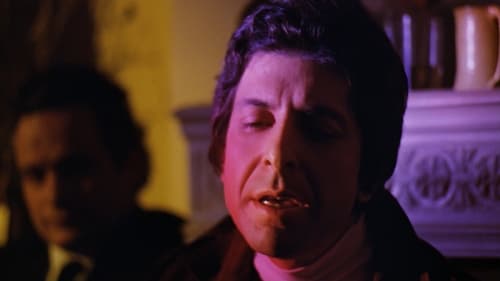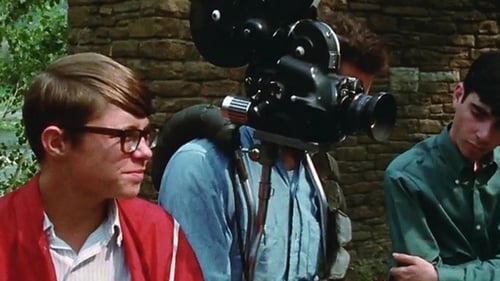Martin Duckworth
Рождение : 1933-03-08, Montreal, Quebec, Canada
История
Martin Duckworth is a Canadian documentary director and cinematographer. He raised in Montreal's Notre-Dame-de-Grâce neighborhood and Halifax, Nova Scotia where his father, Jack Duckworth, was secretary-general of the YMCAs. He holds BA and MA degrees in History from Yale University and the University of Toronto. He was on staff at the National Film Board from 1963 to 1970. From 1990 to 2012, he taught film at Concordia University’s Mel Hoppenheim School of Cinema.

Director of Photography

Self
Martin Duckworth is a staunch defender of peace and justice and one of Quebec’s most important documentary filmmakers. Helped by his 47-year-old daughter, who is on the autism spectrum, the octogenarian supports his wife, photographer and activist Audrey Schirmer, through the final stages of Alzheimer’s disease. Characterized by captivating resilience and strength, this moving biography soberly directed by Jeremiah Hayes allows Duckworth to reflect candidly on the key personal and professional moments of the couple’s lives. Dear Audrey tells a story marked by incredible twists and turns and a consistent attitude toward challenges. The film takes place more in the present than the past, becoming a powerful testimonial to the growing and unshakable love of a husband for his wife.

Camera Operator
The story of a young boy forced to spend all five years of his short life in hospital while the federal and provincial governments argued over which was responsible for his care, as well as the long struggle of Indigenous activists to force the Canadian government to enforce “Jordan’s Principle” — the promise that no First Nations children would experience inequitable access to government-funded services again.

Director of Photography
This feature documentary takes us back to April 20, 2001, as Quebec City prepares to host the 3-day Summit of the Americas. A 4-kilometre fence has been erected, cutting off the Upper Town from the rest of the city. Thirty-four heads of state from the Americas will meet behind closed doors to discuss agreements for a Free Trade Area of the Americas (FTAA). Those opposed to the FTAA are mobilizing and gathering in Quebec City, too. Several thousand delegates have come to participate in the People's Summit, and tens of thousands will march in protest. Six thousand police officers fill the streets and it looks as if the historic Quebec capital is under siege. The local population fears the worst. Will the Quebec capital become a battleground? Shot in cinéma vérité style by 7 of Quebec's best documentary filmmakers, View from the Summit vividly portrays what happens when passionate and creative protesters clash with the ideologies of those in power.

Cinematography
When Hydro-Québec announced its intention to proceed with the enormous James Bay II hydroelectric project, the 15,000 Cree who live in the region decided to stand up to the giant utility. With unprecedented access to key figures like Cree leader Matthew Coon Come and American environmental activist Robert Kennedy Jr., Power is the compelling, behind-the-scenes story of the Cree's five-year battle to save the Great Whale River and their traditional way of life.

Cinematography
This feature film is a documentary portrait of Joseph Idlout, a man who was once the world's most famous Inuit. Unknown to most Canadians today, Idlout was the subject of many films and books, and one of the Inuit hunters pictured for many years on the back of Canada's $2 bill. In this film Idlout's son, Peter Paniloo, takes us on a journey through his father's life - that of a man caught "between two worlds."

Director of Photography
Newfoundlanders share their food, culture, and homes with a group of Tamil refugees found off the coast.

Director

Editor
In 1945, Great Britain and the United States organized a bombing raid that devastated the ancient city of Dresden. This short documentary returns exactly 40 years after its destruction and celebrates its renaissance with the re-opening of one of the most beautiful opera houses in Europe. One guest at this gala was the Canadian navigator of one of the bomber planes, returning to Dresden on a mission of peace that brought him face-to-face with the people who were once his enemies.

Director
In 1945, Great Britain and the United States organized a bombing raid that devastated the ancient city of Dresden. This short documentary returns exactly 40 years after its destruction and celebrates its renaissance with the re-opening of one of the most beautiful opera houses in Europe. One guest at this gala was the Canadian navigator of one of the bomber planes, returning to Dresden on a mission of peace that brought him face-to-face with the people who were once his enemies.

Director
This short documentary depicts the stories of two hibakusha, survivors of the 1945 atomic bomb attacks on Hiroshima and Nagasaki. This film follows them on their mission to New York as representatives of the Japanese Peace Movement at the second United Nations Special Session on Disarmament held in June 1982.

Director of Photography
Survivors of the 1945 bombings of Hiroshima and Nagasaki travel to New York for a UN conference on disarming nuclear weapons.

Director
Survivors of the 1945 bombings of Hiroshima and Nagasaki travel to New York for a UN conference on disarming nuclear weapons.

Director of Photography
Magic in the Sky investigates the impact of television on the Inuit people of the Canadian Arctic. The film also documents the establishment of the first Inuit-language television network, called Inukshuk, which began broadcasting to six Inuit communities in December 1980. The Inuit's efforts to create an indigenous television network mirrors the struggle of any culture trying to preserve its unique identity.

Director of Photography
A film about the women who supported the 1978 miners strike against Inco, the multinational which owned the nickel mines in Sudbury, Ontario. As the women became increasingly involved in the strike, they questioned more and more their traditional supportive role. This provoked many heated discussions among the women and obviously not without upsetting husband, family, union - and company...

Camera Operator
This short documentary profiles a community engaged in developing sustainable living methods, including food production and small-scale solar and wind technology, on a farm in Massachusetts in the 1970s. Well before sustainability was a mainstream concern, these prescient innovators attempted to create a vision of a greener, kinder world. "Think small," say the New Alchemists. "Look what thinking big has done."

Director of Photography

Director of Photography
Experimental filmmaker and color cameraman here collaborate in a surrealistic retelling of the old myth. But this is a dream fantasy with no real parallel to Pandora, replete with striking symbols where everything is larger than life--the silhouetted image of a mother and an infant, the profiled view of two sculptured heads spouting smoke and fire.

Director of Photography
A film about the people of Saigon told through the experiences of three young American journalists who, in 1970, explored the consequences of war and of the American presence in Vietnam. It is not a film about the Vietnam War, but about the people who lived on the fringe of battle. The views of the city are arresting, but away from the shrines and the open-air markets lies another city, swollen with refugees and war orphans, where every inch of habitable space is coveted. (NFB)

Camera Operator
This fictional feature follows a twenty-something man who is struggling to define his position in the world in early adulthood. He has left their parents' home but still has not made an home of his own. Our protagonist’s alienation is palpable; for him life is a game, not because he chooses to make it so, but because he is unable to make anything more of it. But for those who befriend him and eventually turn him loose again, his game is not enough.

Self - Cameraman
When a camera crew are sent to document hippie protests in Yorkville, Canada's counter-culture capital, they are charmed by a group of misunderstood kids with their own ideas about what kind of movie to make.

Director of Photography
When a camera crew are sent to document hippie protests in Yorkville, Canada's counter-culture capital, they are charmed by a group of misunderstood kids with their own ideas about what kind of movie to make.

Director of Photography
This short documentary is a portrait of the early era of computing and the process and implications of the digitization of large amounts of information. Examining the arduous work of assessing and documenting the geographical landscape, including sampling and analysis of soil, forestry, timber, wildlife, resources, industrial sites, and many other aspects, we see that human beings alone couldn't handle the vast amount of information that is collected. A new kind of computer (an “instant library”), the Canada Land Inventory Geo-information System, was developed to help manage and develop Canadian land. This film examines the workings of this new and mysterious machine.

Director of Photography
A fifth of Canadians live at the subsistence level. This is a look at that world, where the street is home, and where poor shelter, poor food, poor schools and poor health are the only certainties of life. Children, old people, the sick and the drifters are caught in it. It is a world filmed throughout Canada so that people who are not part of it can see it, think about it, and maybe help to change it. (NFB site)

Cinematography
This short satirical film, created entirely from archival footage, is about the British Empire—on which the sun never sets. The majority of the humour and wit is found in the interplay between image and sound: what we see during the formative days of the Empire, and what famous servants had to say about it. Edited by Oscar®-nominated experimental filmmaker Arthur Lipsett (Very Nice, Very Nice).

Cinematography
A film for teachers, describing the use of the "discovery method" in teaching. All it needs is a teacher whose encouragement is natural and unobtrusive. The film shows a free environment where even the furniture can be arranged to meet the needs of a particular enquiry. Film loops and other visual media are shown being used to advantage in this method of teaching.

Director of Photography
In this short film, a young man, a girl and a dog attempt to fly with wings more symbolic than practical.

Director of Photography
This feature documentary is a profile of Canadian press tycoon Roy Thomson, whose single-minded attention to business brought him riches, power, and even a baronetcy in England. A native of Timmins, Ontario, Thomson had a tremendous career as publisher, television magnate, financier, and owner of many newspapers, including leading London dailies. The film is a frank study of an equally frank man.

Director of Photography
A rare "inside" view of a motorcycle club in Toronto, one of the network of such fraternal groups in the large centers across North America. The names they adopt (Satan's Choice is only one) are as individual as their special ethics and views of life, all freely expressed in this film.

Director of Photography
An American elementary school program from the 1970s, Man: A Course of Study (MACOS), looked to the Inuit of the Canadian Arctic to help students see their own society in a new way. At its core was The Netsilik Film Series, an acclaimed benchmark of visual anthropology from the National Film Board that captured a year in the life of an Inuit family, reconstructing an ancient culture on the cusp of contact with the outside world. But the graphic images of the Netsilik people created a clash of values that tore rifts in communities across the U.S. and revealed a fragile relationship between politics and education. A fiery national debate ensued between academic and conservative forces.





